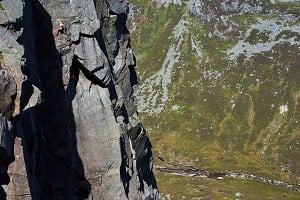
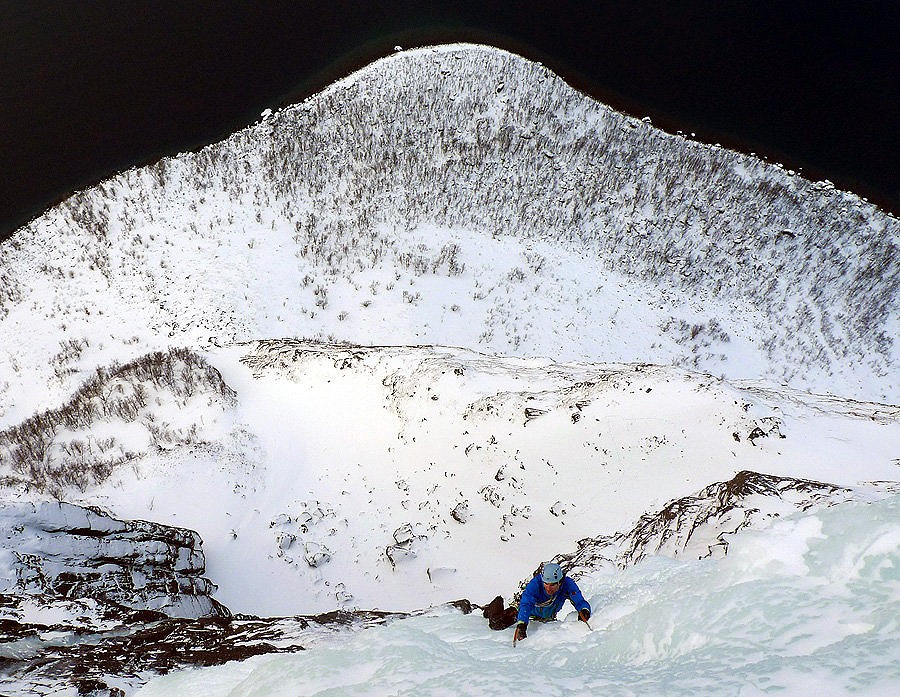

Imagine a land where ice fills the valleys from November to April, where alpine ridges and huge icy walls rise from the sea, and where around every corner more potential awaits. Sound like a winter climbing paradise? It not only exists, but is only a days travel from the UK. Welcome to Arctic Norway.
In the last week of February, the Norwegian Alpine Club hosted a winter climbing meet in the Troms region of arctic Norway. Based around the Lavangen fjord on the mainland, and on the nearby island of Senja, the meet brought climbers from the rest of Europe and beyond to explore the unsung winter climbing potential of the region.
It initially felt slightly wrong to leave behind the best Scottish winter in years, but flying into Tromso watching the sunset over the mountains and fjords quickly changed my mind. At the airport, I joined a group of likely looking kitbag wielding characters where I was quickly tracked down by the Norwegian climbing legend Sjur Nesheim who gave me a lift onwards to Lavangen.
As we drove Sjur explained that conditions in the area this year were 'very thin', courtesy of the same weather that was giving Scotland a bumper season bringing extreme cold which had stopped the melt freeze cycles that build the ice. Looking out into the moonlit frozen land there seemed to my 'UK perspective' to be ice everywhere. In the event there was more than enough climbing to keep forty-odd climbers of all standards entertained for a week, so when conditions are fat there must be a lifetimes worth of routes and some... Indeed, after a week of being shown around the area and dragged up outstanding climbs by a very talented Slovenian-Norwegian-French team who kindly put up with my flailing I feel I at best barely scratched the surface of the areas potential.
The climbing:
Although pretty nearby in Norwegian terms (2ish hrs drive between them) the climbing in Lavangen, and the climbing on the island of Senja have different feels.
Lavangen area:
Lavangen in winter is a land of valley icefall plenty. Running inland from the Lavangen fjord, the Spansdalen valley is described by the locals as northern Norway's answer to Rjukan. The main action lies on the south (north-facing) side of the valley where there are around a dozen big ice lines from WI3 to WI6, between two and five pitches long and all around half an hour from the road. King of these is the huge Henrikkefossen (250m WI4/5), a superb classic that dominates the view from the village of Tennevoll at the head of the Lavangen fjord.
A short drive northwards, the frozen Flaget lake allows a five minute stroll to a range of south facing sunny lines including an impressive three pitch WI5+, an superb and amenable single pitch WI3 plus several bolted mixed lines and loads of other ice - in short something for everyone to enjoy.
In the unlikely event of exhausting these, the rest of the area is filled with ice - almost anywhere there are cliffs (i.e. nearly everywhere) icefalls are to be found, from right by the sea to high in the surrounding mountains. Although there is currently no guidebook, topos to the area are in production for next winter, and as the ice is clearly visible from the road more detailed information isn't needed... enjoy!
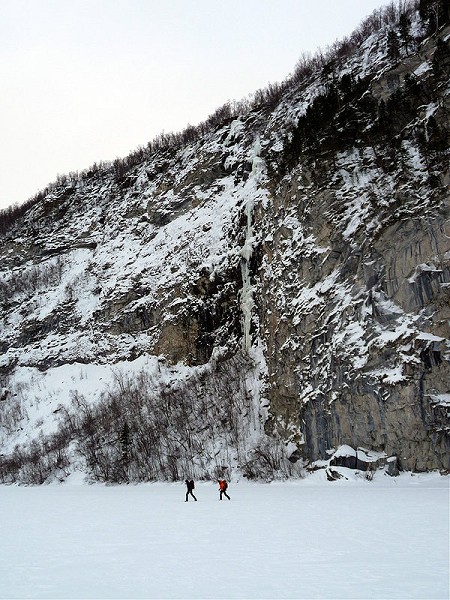
Tucked away in the northwest of Norway's second largest island Senja lies an adventure seeking winter climbers paradise. Approaching from the mainland, the islands initially gently rolling landscape suddenly gives way to a world of dramatic fjords surrounded by stunning alpine peaks, huge icy walls and steep turfy ridges. Suffice to say the mountains surrounding the Baltsfjord, Oyfjord, Mefjord and Ersfjord are among the most spectacular I've ever seen.
Senja is adventure climbing at its best, and will hopefully remain that way. Some lines have been climbed, most probably haven't. There's no guidebook and little in the way of records so it's all a step into the wild unknown. Go with an open mind, look around, take your pick and enjoy!!
Logistics:
When to go:
Lying well to the north of the Arctic Circle, the area has reliable winter climbing anytime from November to the end of April and often beyond, and from mid-February onwards there's plenty of daylight for climbing.
Getting there and around:
Air is by far the fastest method (around 2hrs flight from Oslo), as it's a long long drive (or boat ride) from Oslo or Bergen further south. The area is well served by airports, with Bardufoss extremely convenient for both Lavangen and Senja, and Tromso (north), and Narvik (south) around 2-3 hours away. All three are served by both Norwegian [www.norwegian.com] and SAS [www.flySAS.com] (among others) from Oslo, which helps to keep the prices down, and Norwegian currently operate a direct flight from London to Tromso. www.skyscanner.net is as always a good place to start for finding options from the UK.
Narvik is also accessible by train, taking the famous Norrlandstaget night train from Stockholm. See www.sj.se for further details.
A car is pretty much essential for getting around once there - hire cars (with spiky winter tyres!) are available in Tromso, Bardufoss and Narvik. In addition, the Fjellkysten [www.fjellkysten.com] hotel (see "Where to stay" below) does airport pickups from Bardufoss, meets the public bus system, and has a small fleet of it's own vehicles which they hire to guests.
Where to stay and supplies:
The meet was hosted at the Fjellkysten Hotel [www.fjellkysten.com] looking out over the stunning Lavangen fjord. This provided simple but comfortable catered and self-catered accommodation with plenty of room for relaxing and kit, a friendly family run atmosphere and a bar! Other accommodation is also available in the area, and there are food shops in both Tennevoll and Sjovegen.
On Senja, climbers stayed in the Mefjord Brygge [www.mefjordbrygge.no] in the fishing village of Mefjord, again providing simple, comfortable and flexible accommodation - plus a bar and superb seafood home cooking! A small supermarket for supplies is in the next door village Senjahopen.
The nearest gear shops are in Tromso, but the range and availability is limited so best to bring some spares if you have butter fingers.
The Photos:
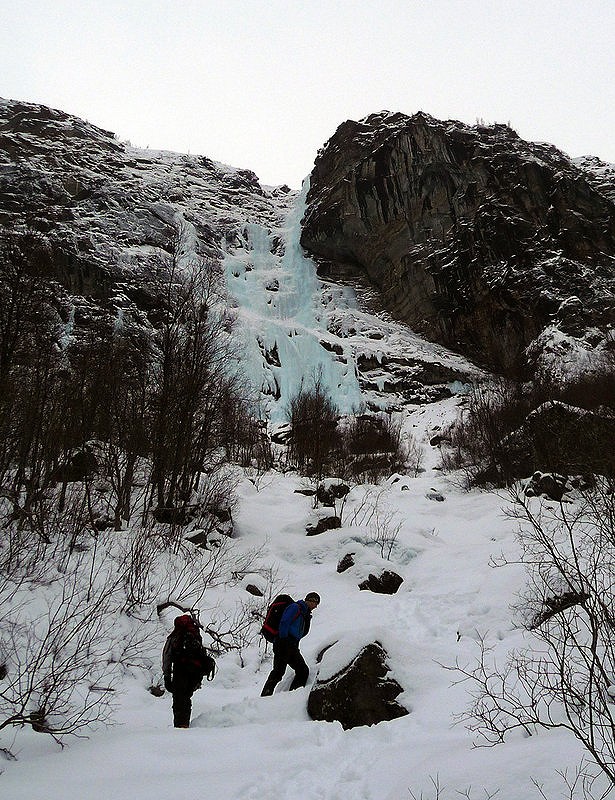
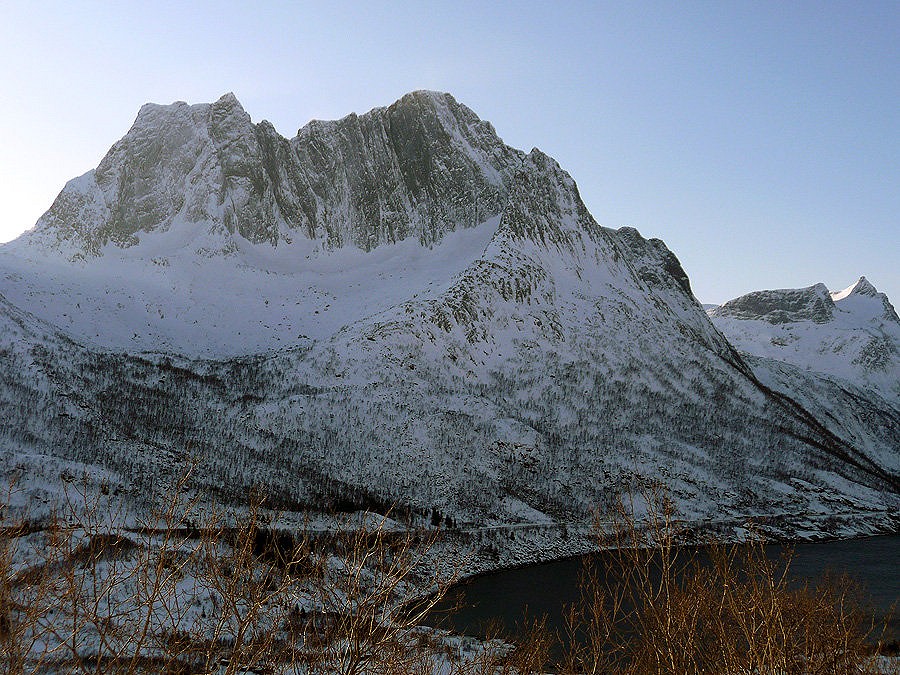
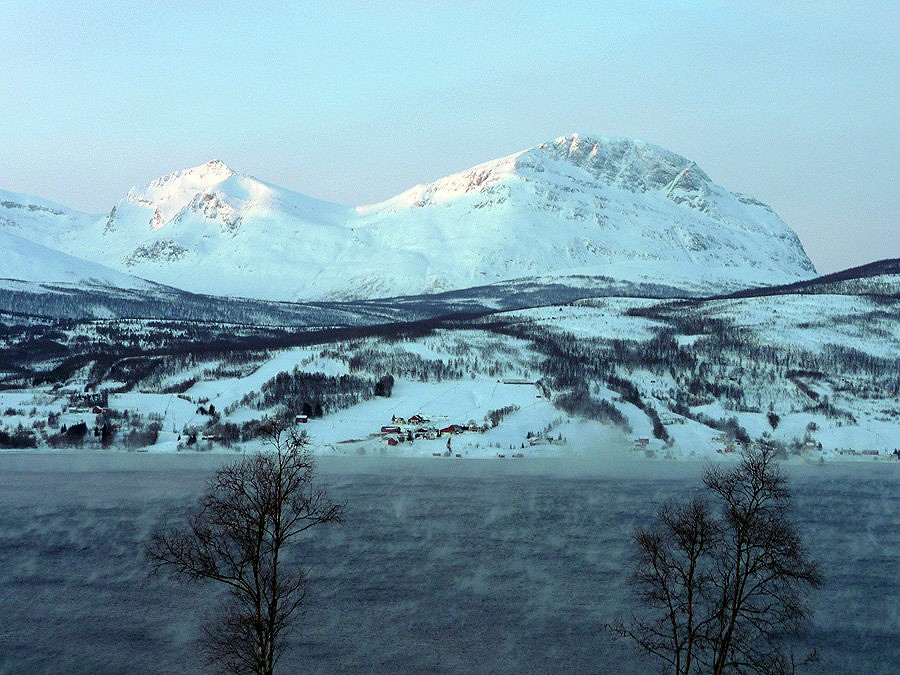
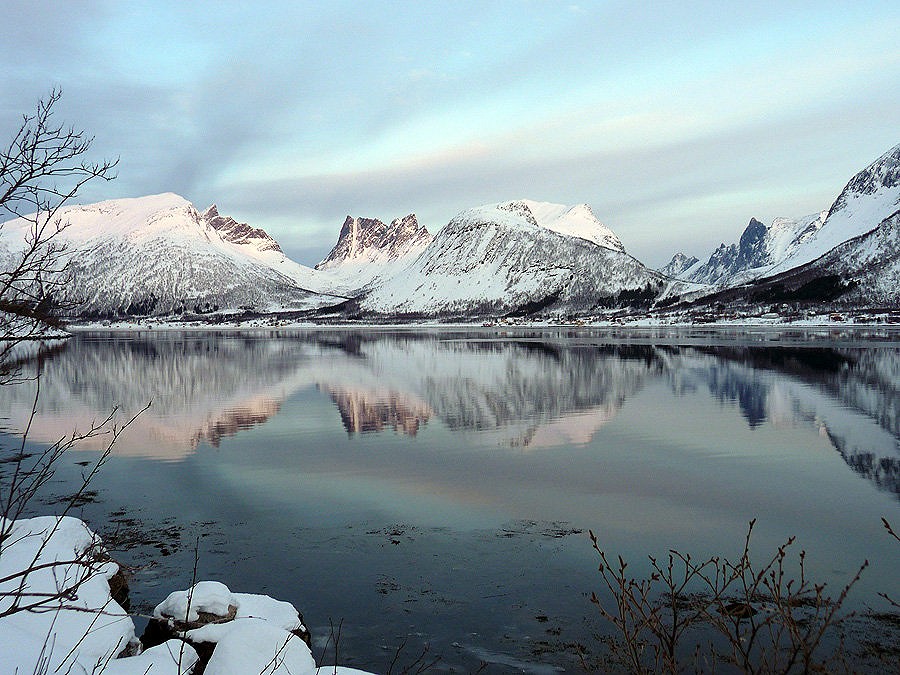
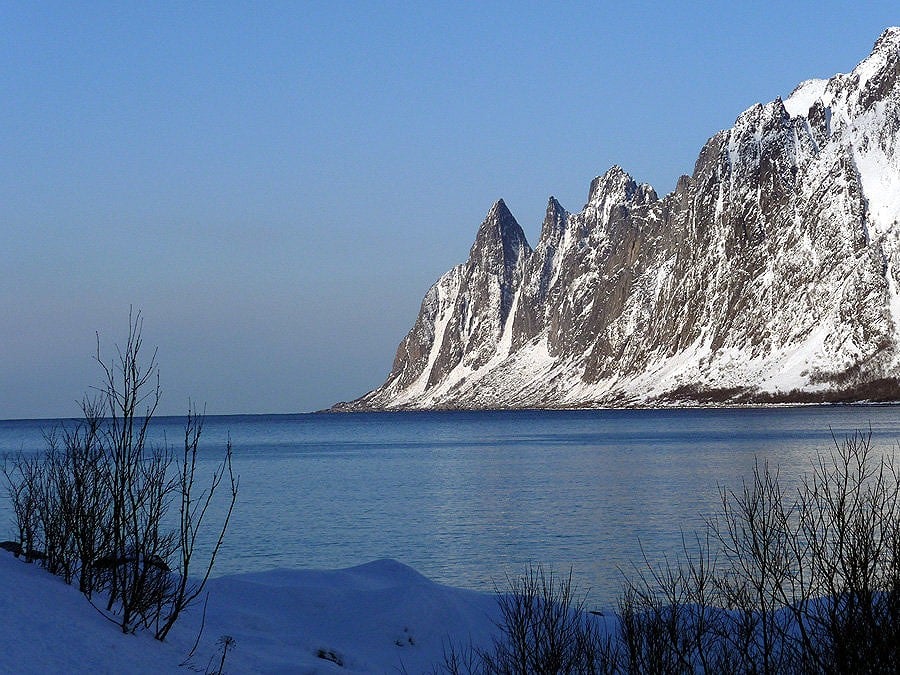
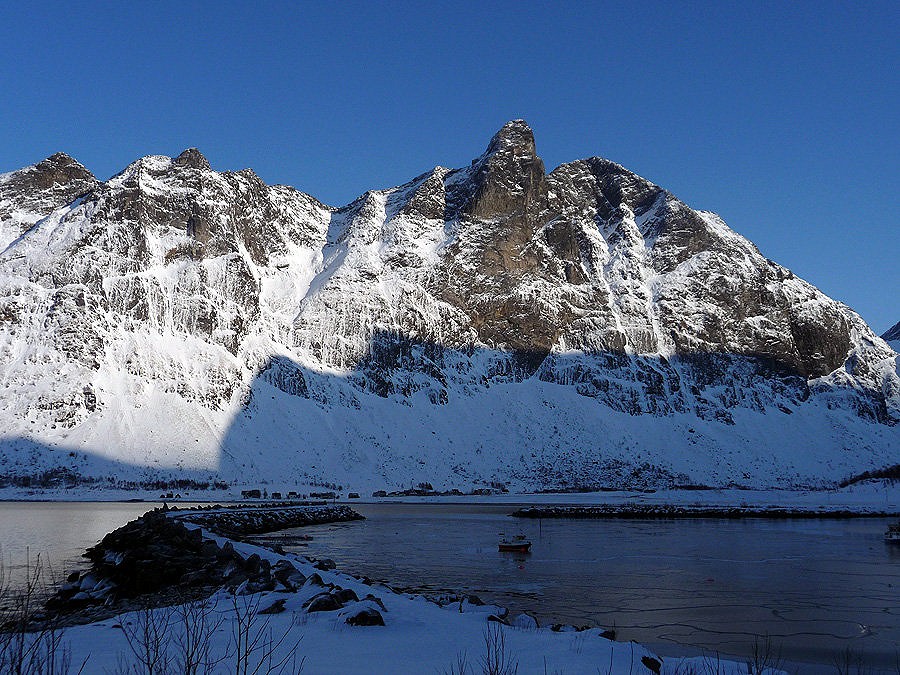
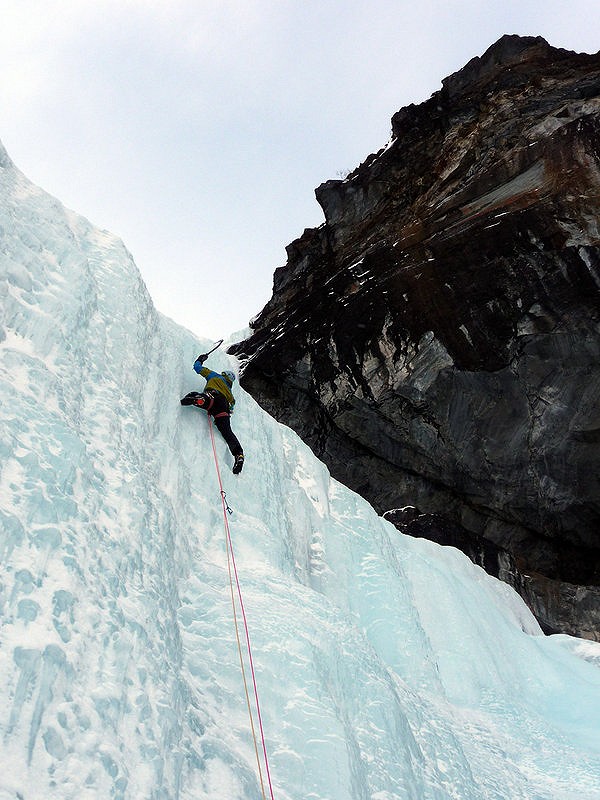
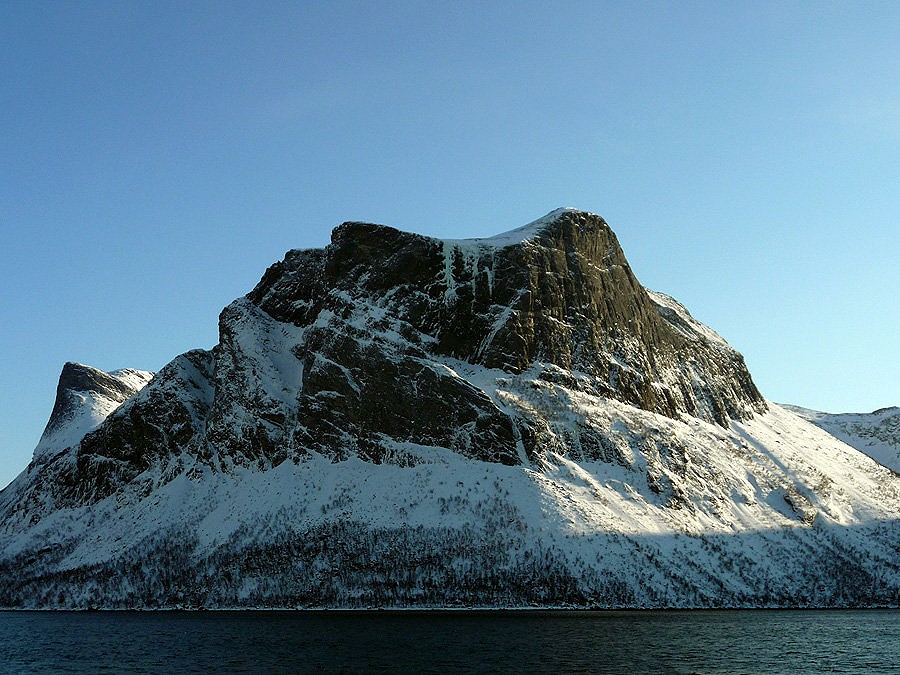
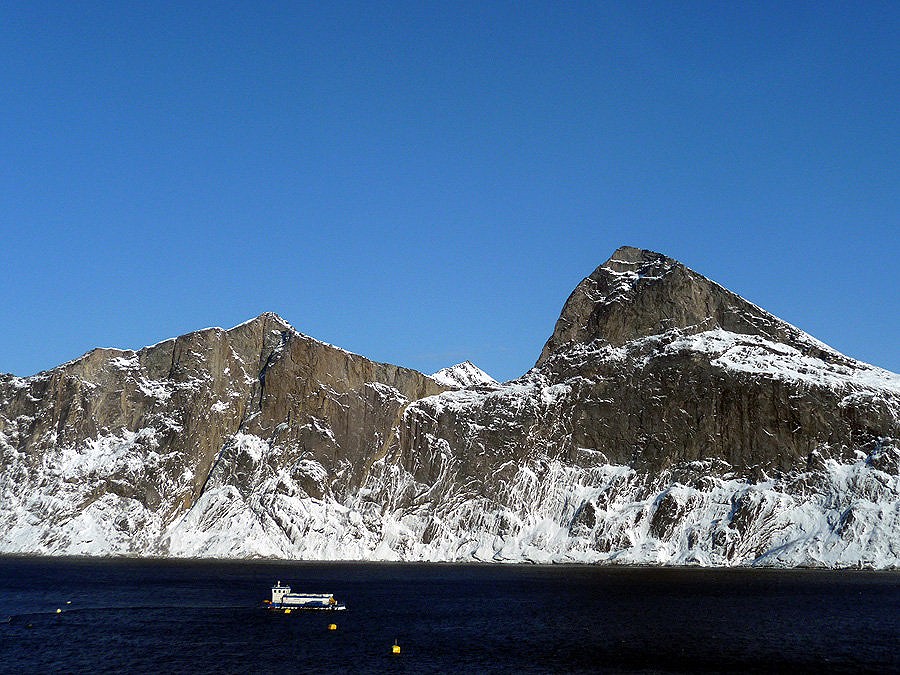
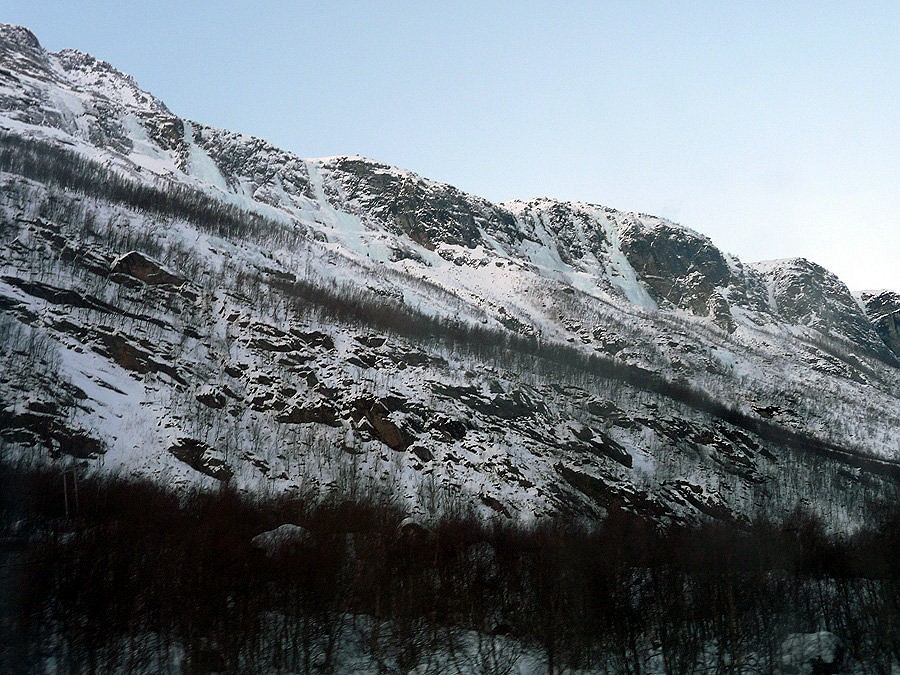
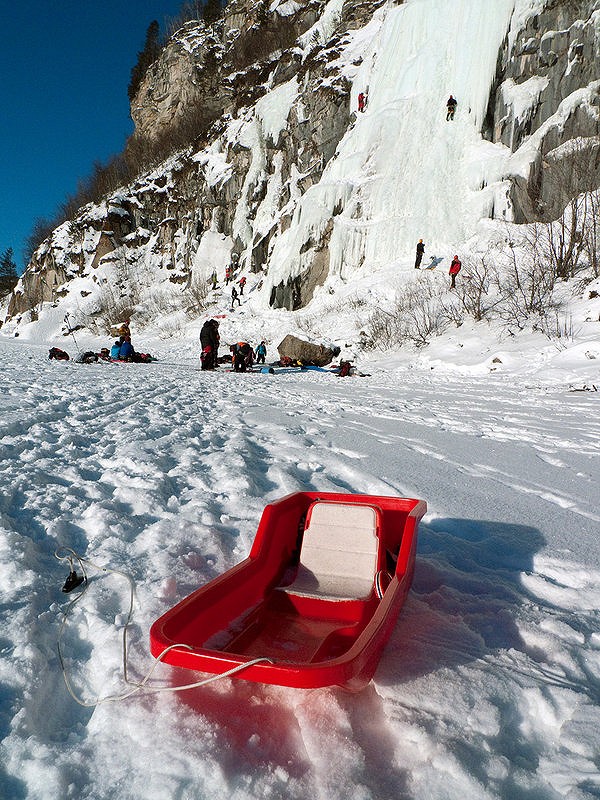
Viv Scott would like to give a huge thanks to the Norwegian Alpine Club, Marius Morstad, Sjur Nesheim, Marius Olsen and everyone else on the trip.

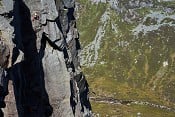
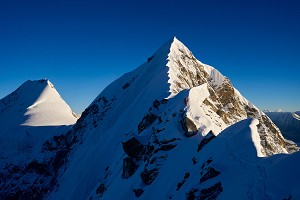
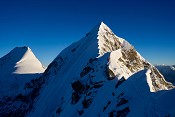
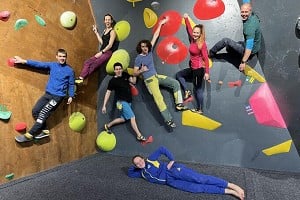
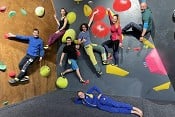

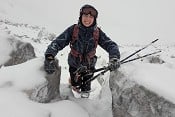
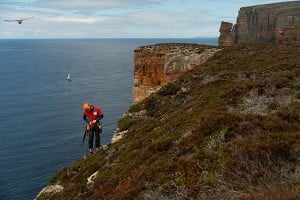

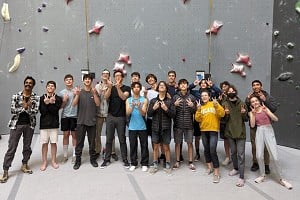
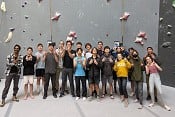
Comments